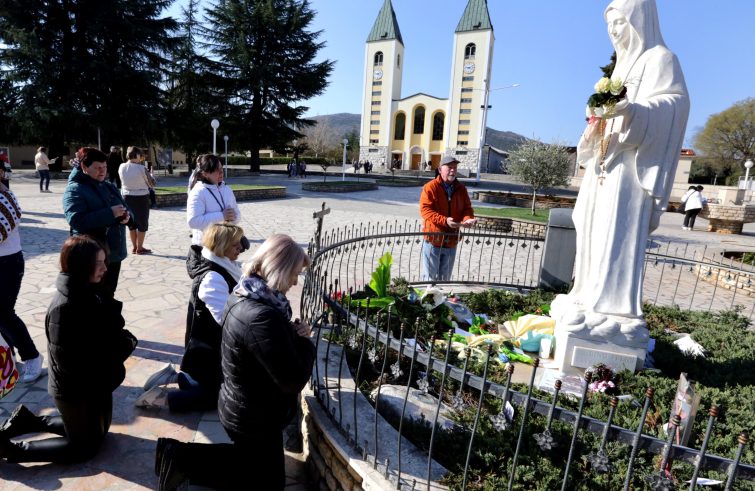
A spiritual experience with “positive fruits”, but separated from the experience of the alleged visionaries, “who are no longer considered to be the central mediators.” The Note “The Queen of Peace” thus defines the phenomenon of Medjugorje, which the Dicastery for the Doctrine of the Faith allows to worship publicly, but without expressing an opinion on its supernatural nature. “For the Pope, a declaration of supernatural origin is not necessary”, said Cardinal Víctor Manuel Fernández, Prefect of the Dicastery for the Doctrine of the Faith, answering questions from journalists: “For him, the nihil obstat is sufficient”. “Should there be messages in the future, they will need to be examined and approved prior to their publication”, the cardinal clarified: “Until their approval, the faithful are advised not to consider them as edifying texts.” Furthermore, “no decision has yet been taken” on the construction of a shrine.
Under the new provisions on the discernment of supernatural phenomena, the faithful are authorised to give their adherence to the spiritual experience of Medjugorje, “as many positive fruits have been noted in the midst of a spiritual experience, while negative and dangerous effects have not spread among the People of God.” The overall evaluation on the “alleged messages” is positive as well, albeit with a few clarifications on certain expressions.
The conclusions of the Note, the document specifies, “do not imply a judgment about the moral life of the alleged visionaries.” In any case, “the charismatic gifts” that may be connected to that experience “do not necessarily require those involved to have moral perfection.”
“While this does not imply a declaration of the supernatural character of the phenomenon in question” and recalling that the faithful are not obliged to believe in it, the Nihil obstat – issued by the Bishop of Mostar-Duvno in agreement with the Holy See – indicates that the faithful “can receive a positive encouragement for their Christian life through this spiritual proposal, and it authorizes public acts of devotion.”
“Abundant conversions, a frequent return to the sacraments (particularly, the Eucharist and Reconciliation), many vocations to priestly, religious, and married life, a deepening of the life of faith, a more intense practice of prayer, many reconciliations between spouses, and the renewal of marriage and family life”, reads the document listing the positive fruits, noting that “such experiences occur above all in the context of pilgrimages to the places associated with the original events rather than in meetings with the “visionaries” to be present for the alleged apparitions.” The intense daily pastoral work in the parish of Medjugorje has increased due to the ‘Medjugorje phenomenon’, the Note states. “Unlike other sites linked to apparitions, people seem to visit Medjugorje mainly to renew their faith rather than to seek help with specific requests. Notably, groups of Orthodox Christians and Muslims also visit the shrine.” Not to mention the fact that many people have discovered their vocation to the priesthood or consecrated life in the context of the “Medjugorje phenomenon.” “There is no shortage of genuine conversions of people who had been far from God and the Church and who moved from a life marked by sin to adopt radical existential changes oriented toward the Gospel”, reads the text: “Numerous healings have also been reported. Works of charity have also arisen in connection with various communities and associations, particularly those that care for orphans, drug addicts, alcoholics, children facing various difficulties, and people with disabilities.”
The criticalities connected with the alleged messages include the fact that such phenomena “at times appear connected to confused human experiences, theologically inaccurate expressions, or interests that are not entirely legitimate.”
This does not exclude the possibility of “some error not due to bad intentions, but to the subjective perception of the phenomenon.” For instance, in some cases “Our Lady seems to show some irritation because some of her instructions were not followed. So, she warns about threatening signs and the possibility of no longer appearing.” There are also messages for the parish in which Our Lady seems to want to exercise control over the details of the parish’s spiritual and pastoral journey, thereby “giving the impression that she wants to take the place of the ordinary parish structures meant for participation.” In some cases, there is an insistence on listening and accepting the messages that “probably comes from the love and generous fervor of the alleged visionaries who, with goodwill, feared that the Blessed Mother’s calls for conversion and peace would be ignored.” Yet this insistence becomes even more problematic “when the messages refer to requests that are unlikely to be of supernatural origin, such as when Our Lady gives orders about specific dates, places, and practicalities and when she makes decisions about ordinary matters.” In contrast, the Dicastery for the Doctrine of the Faith highlights a message that can be considered as a summary of the Gospel message as seen through Medjugorje: “I desire to draw you ever closer to Jesus and his wounded heart.”










